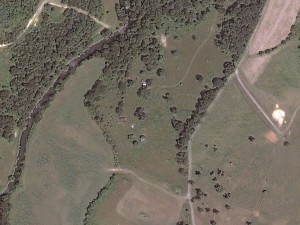I remember in high school when I had been dating this girl for a little while, my dad tried to have this real awkward talk with me and I sensed it immediately. I cut him off right after he uttered this part of his comments: “You know son, when a man and a woman…” I said, “I know, dad.” That was it. Thank god.
Well, anyways, this article isn’t about that. But I imagine you were hoping so, as the title sort of hinted at something more fun than what’s to come. But while not as fun, just as important, if not more so. We have more people in the world than we know what to do with, so if people forgot how to make whoopee, we might be okay for a while. But if we didn’t have food to feed the folks we have, well, then we’d be in a bit of trouble.
 The Spikenard Honeybee Sanctuary in North Floyd, Virginia is doing its part to make sure we all have food to eat by protecting one of the most important species on earth: the honeybee. Do your part and host a hive. It would “bee” awfully cool of you, man. A 60-cm color image captured by QuickBird on July 5, 2010 and comes courtesy of DigitalGlobe. Photo enhanced by Apollo Mapping.
The Spikenard Honeybee Sanctuary in North Floyd, Virginia is doing its part to make sure we all have food to eat by protecting one of the most important species on earth: the honeybee. Do your part and host a hive. It would “bee” awfully cool of you, man. A 60-cm color image captured by QuickBird on July 5, 2010 and comes courtesy of DigitalGlobe. Photo enhanced by Apollo Mapping.I’m sure the five of you that are accidentally reading this blurb are familiar with the sad state of affairs with our bee population. Of the managed honeybee colonies in the U.S., over 20% were lost in the winter of 2013-14 according to the USDA. A lot of this has to do with Colony Collapse Disorder (CCD), a very serious ailment that has been chronicled in such documentaries as, “Vanishing of the Bees” and “Queen of the Sun: What Are the Bees Telling Us?,” to name just a few of the attempts to inform the public of the human impact on honeybees. CCD has its economic impacts ($200 billion in agricultural food losses in 2005 alone), but it also has its more ominous future fears that we need to be conscious of, such as the potential loss of crops and the domino effects it would cause. Bees pollinate nearly 1/3 of our domestic crops. While other beings could do the job, they are not nearly as efficient.
Well, that’s the bees, now here are the birds: vertebrates like bats (yes, I know, not a bird) and birds do much of our other vital pollination. Overall, pollinators are considered to be in decline, and insecticides are no small part of the story. Hummingbirds, honeyeaters and sun birds are the most prevalent of our winged friends who do the good work for us. But just as the bee is facing desperate times because of humankind’s destruction, so too are the birds that help give us sustenance. In 1999, the Convention on Biological Diversity issued a warning that our pollinators were in drastic decline; and since then, we have done nothing but make their conditions worse. Many earth-first organizations suggest grassroots efforts to make safe spaces from the home and neighborhood up. Setting examples at the very local level spreads the message of what we expect from the corporations we support with our grocery bills and tax dollars. Constructing pollinator gardens that cater to the species that serve us is an easy, effective way to make a positive impact. Eliminating pesticide, herbicide and especially insecticides is an equally vital component of stopping the decline.
Progressive bee sanctuaries like the Spikenard Farm Honeybee Sanctuary is engaged in research to better understand how to protect our buzzy friends. By developing a better understanding of what a bee needs, as well as how to strengthen their immune systems to help fight against the human-made contaminants they’ll inevitably come in to contact with, Spikenard has reduced winter die-off in their sanctuary to levels far below the national average. They suggest that those who want to make a positive impact reach out to their local beekeeper to host a bee hive, and to invest in bee forage plants so the critters can have safe places to charge on. It’s really quite simple: if you want to have food in the future, you must protect the birds and bees that do so much necessary work for us. And if you want to try to live on Twinkies, well, stock up and good luck to you.
Justin Harmon
Staff Writer


Leave a Reply